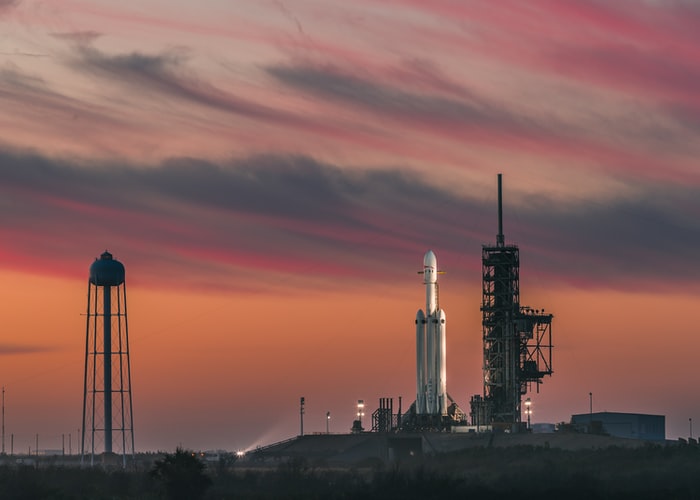By Venia Kontogianni,
“Artemis” is the NASA-led program regarding the ambitious plan of human return on the moon’s surface. On the 13th of October, eight countries -Australia, Canada, Italy, Japan, Luxembourg, the United Arab Emirates, the United Kingdom and the United States of America- signed the Artemis Accords in order to better fulfill this goal. This agreement consists of a set of guidelines establishing the way through which humankind plans to approach the exploration and exploitation of space and the Moon. On the 27th of October, the European Space Agency agreed to collaborate with NASA on the Artemis Gateway, the orbiting outpost which is of vital importance for both the human return to the Moon and space exploration. It is an ambitious plan with a fitting name, as according to Greek mythology, Artemis was Apollo’s twin sister, this way making a reference to the Apollo Program, which successfully landed the first man on the Moon in 1969.
Essentially, the Artemis Treaty is a multilateral agreement based on international law, binding only those who have signed it. Its main objective is the understanding among signatories that all outer space ventures should be done so in a peaceful and cooperative manner, one that is aligned with the principles expressed in the Treaty on Principles Governing the Activities of States in the Exploration and Use of Outer Space, including the Moon and Other Celestial Bodies, better known as the Outer Space Treaty, signed and entered into force in 1967. Some of its main principles include that of “interoperability”, the enabling of common exploration infrastructure by different space agencies and “transparency”, the obligation to share -with the public and the international scientific community- all national space exploration plans as well as the scientific findings stemming from said explorations, as a means to promote international cooperation. The principle of transparency is in consistency with the Article XI of the Outer Space Treaty. Other provisions include matters such as emergency assistance, registration of space objects in accordance with the Registration Convention, the safe disposal of space debris following each mission and the deconfliction of space activities.
What does the future of space look like for NASA?
The contractual provision on the handling of space resources (and the numerous NASA announcements) gives it away and the plan itself is a multilayered one: the first step is to perform a manned lunar mission in 2024, one that sees the first ever woman setting foot on the Moon. The first female to have flown into space is the cosmonaut, Valentina Tereshkova, who was launched into orbit in 1963. It is worth noting that no person has stepped on the moon since the last manned lunar landing operation in 1972 with Apollo 17. After the successful completion of the 2024 lunar mission, NASA is planning to gather information about the Moon and its surroundings by collaborating with international and private commercial partners and extracting or mining lunar material. The Outer Space Treaty prohibits any claim of sovereignty over or appropriation of space and as it has been clearly stated in the Artemis Accords, space resources do not inherently constitute national appropriation.
However, the U.S. has managed to circumvent these laws through the controversial Public Law No. 114-90 i.e. the Commercial Space Launch Competitiveness Act. In Section 402, “A U.S. citizen engaged in commercial recovery of an asteroid resource or a space resource… shall be entitled to any asteroid resource or space resource obtained, including to possess, own, transport, use, and sell it according to applicable law, including U.S. international obligations.” At the same time, in Section 403 of the same document, they maintain “It is the sense of Congress that the United States does not, by enactment of this Act, assert sovereignty or sovereign or exclusive rights or jurisdiction over, or ownership of, any celestial body.”
In essence, the Act sustains that, despite allowing American citizens and organizations to hold on to or sell any material they come across in space, these actions do not entail sovereignty or ownership over the original place of this material and therefore do not clash with the Outer Space Treaty. At its core, it is a “finders, keepers” situation and definitely a bone of contention among scholars – with sound reason. The final step of the Program foresees the coveted first crewed mission to Mars in 2030. In comparison, on the other side of the globe, the U.S.’s biggest antagonist right now, China, is expected to conduct a crewed lunar mission around 2035, aiming to create a permanent research base on the Earth’s natural satellite.
Taking a look at the list of signatories, it is striking that some of the most powerful, spacefaring countries are missing. The Treaty in Section 13 – Final Provisions, welcomes any countries that wish to partake, by simply submitting their signatures to the U.S. government. Therefore, the decision made by some countries not to jump on the space hype bandwagon could raise some eyebrows. This Treaty is the latest advance towards shaping the future of space exploration, so why miss out on it? Despite its seemingly benevolent motives, the Treaty has faced a hefty amount of criticism, most notably from the Head of Russia’s Space Program, Dmitry Rogozin, calling it “U.S.-centric”. The absence of signatures by some of the most developed countries in space technology like Russia, China and many other in the Global South such as India, leads some to perceive the agreement as a power grab by North America and its allies for possibly profitable lunar mining opportunities or even as a way for resource appropriation. Whether that is the case or not, NASA is still the leading figure in this endeavor, so that could be an inhibitor for Russian and Chinese involvement. Even if humankind as a whole will benefit from the exploration of space, the process seems to be a private national matter.
The latest space news show that stakes are high and space initiatives are rapidly advancing. That is mainly due to NASA’s zest, who, in addition to sponsoring Nokia in order to establish a 4G LTE network for lunar communication between astronauts, affirmed in October, the existence of water molecules in sunlit parts of the Moon, showing that lunar conditions are not so anti-human after all and therefore, lunar colonies could someday be a reality. NASA is set to make long strides in 2021, with the landing of the Perseverance rover on Mars in February, the Artemis I mission and the Webb telescope launch among other things. As for 2030, it could be remembered as another 1969. If only the U.S. could assuage the fears of hegemonic space behavior, perhaps we could take the next “giant leap for mankind” together and faster.






